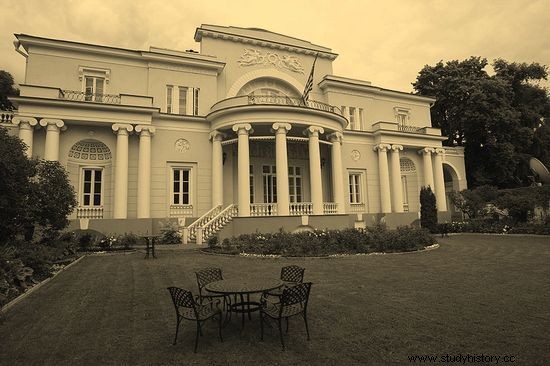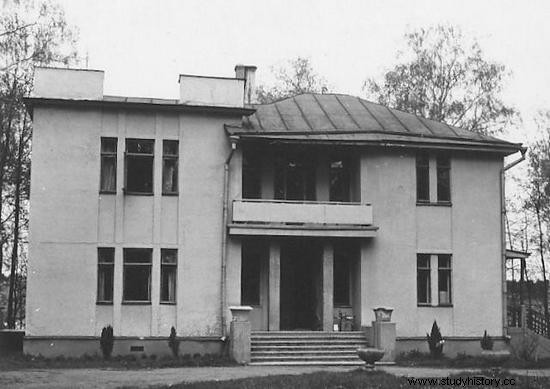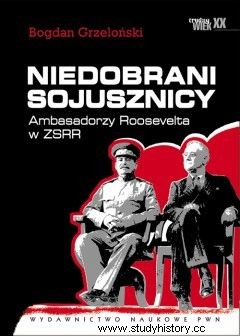It would seem that the function of the US ambassador is every diplomat's dream job. All this prestige, high wages, standard of living! Well, unless it's 1942 and you're accredited in the Soviet Union ...
The retired Admiral William Harrison Standley, who was appointed his representative in the USSR in February 1942 by Franklin D. Roosevelt, saw it first hand. In his new work, Standley had to face unexpected obstacles of not only political but also ... provisioning nature.
You want coal? Load yourself
Although it is hard to believe today, the embassy of the country that financed the Allied efforts in the war against the Axis had to fight for the necessities at every step. The most difficult period in this respect came at the turn of 1942 and 1943. As he writes in his latest book, Nieobrani Aliciednych. Roosevelt Ambassadors in the USSR ”prof. Bogdan Grzeloński:
Coal and fuel oil were rigorously separated for industrial plants, but also for the body. The embassy had to press for a long time on a special institution for servicing the diplomatic corps and explain that its employees are used to high temperatures in the rooms.

Spaso House. The building of the American embassy in Moscow. During the time William Harrison Standley was in office there, the facility struggled with constant supply problems.
In the end, when the Americans received an allocation of heating oil for their Moscow embassy, it turned out that it was of such poor quality that it was hardly suitable for space heating. That is why diplomats were forced to try again for an allocation of fuel, this time of a better sort. The situation was similar in the case of coal. The embassy had to arrange the transport itself and the people for loading and unloading. As a result, the trucks had to be borrowed from the Lend-Lease administration, and the transshipment service at Standley's request, all the staff, including the women, got to work.
Caviar, champagne… or canned food?
There were also problems with feeding the embassy staff. The Soviet authorities introduced food rationing not only for their citizens, but also for the foreign diplomatic corps. As a result, diplomats and US embassy staff suddenly found themselves on a compulsory diet. Of course, not everyone liked it. As Prof. Bogdan Grzeloński:
The quantities of each food item are detailed depending on the job title. Eggs were allocated from 5 to 10 eggs per person per month, for example, but quite often they were missing from the special corpus store.
In turn, prices in bazaars, where the Soviet authorities allowed farmers to sell a small surplus of produced food, became obscenely high. And even if you take into account the salary of American diplomats, which was respectively:Ambassador 1410, Counselor 830, and Second Secretary $ 340. As Standley reported to Washington, one kilogram of beef or chicken cost $ 7, hams from 8.5 to 10, and a kilogram of cabbage or carrots from 75 cents to one dollar, apples 2.25 .

The US Embassy near Moscow. It was in her garden that, during the Second World War, chickens were raised and vegetables were grown to feed the staff of the facility and various other American missions.
What's worse, despite such exorbitant prices, there was almost always a shortage of food products. Therefore, the embassy eventually hired an authorizing officer to bring in canned food and other essential products from the States. Here, however, another unexpected problem arose. The Soviets considered a large part of the supplies to be luxury goods and imposed high duties on them. This, of course, led to an endless exchange of correspondence between the embassy and the People's Commissariat for Foreign Affairs.

The article is based on the book by professor Bogdan Grzeloński entitled "Bad allies" (PWN 2013).
Continuous supply problems caused the embassy to raise chickens to have eggs, and to grow vegetables and green salad in a dacha garden outside the city . It quickly turned out that it was a bull's eye. As William H. Standley later recalled, the food obtained in this way fed the personnel of various American missions and kept costs within the limits allocated by the government. By the way, he ironically stated that I am sure it protected us from total anemia.
It was only with the success of the Red Army on the front that the supply problems began to diminish. William H. Standley, however, did not live to see it. In the fall of 1943 he was replaced by William A. Harriman. The latter, on the other hand, did not even guess how much trouble for his predecessor was to eat a decent breakfast ...
Source:
- Bogdan Grzeloński, Bad allies. Roosevelt Ambassadors to the USSR , Polish Scientific Publishers PWN, 2013.
